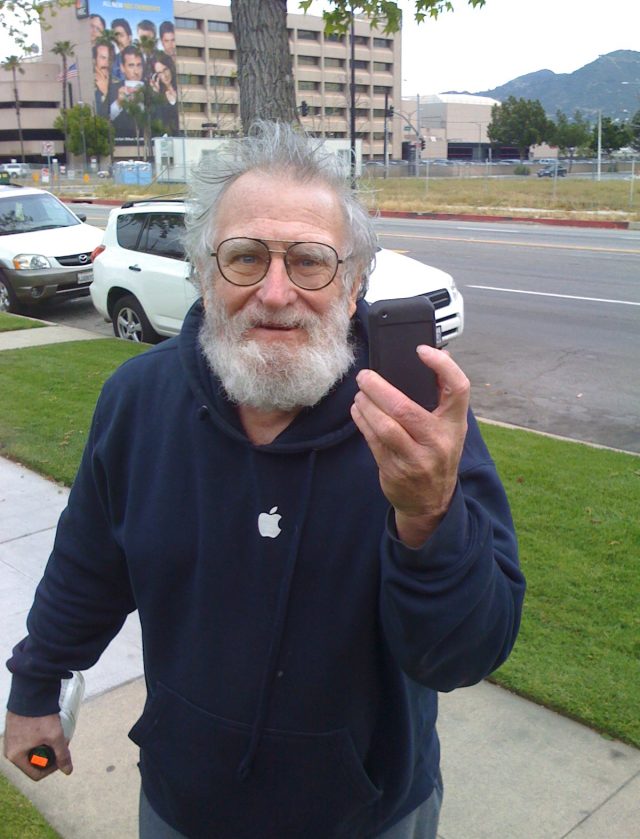

Hardware and software developer Apple Computer

Wozniak and Jobs later set up a small business selling blue boxes. Also present was Wozniak's friend Steve Jobs. Wozniak and Draper met to compare techniques for building blue boxes. However, it also caught the attention of University of California, Berkeley engineering student and future Apple co-founder Steve Wozniak, who located Draper while working as an engineer at the radio station KKUP. The notoriety from the article led to Draper's arrest in 1972 on charges of toll fraud, for which he was sentenced to five years' probation. Secrets of the Little Blue Box, Ron Rosenbaum, Esquire Magazine (October 1971) as republished by Slate The phone company is nothing but a computer. A computer is a System, do you understand? If I do what I do, it is only to explore a system. And if I do it, I do it for one reason and one reason only. When first contacted by Rosenbaum about the story, Draper was ambivalent about being interviewed, but also in the same breath explained his prevailing ethos: The article relied heavily on interviews with Draper and conferred upon him a sort of celebrity status among people interested in the counterculture. In 1971, journalist Ron Rosenbaum wrote about phone phreaking for Esquire. The whistles are considered collectible souvenirs of a bygone era, and the magazine 2600: The Hacker Quarterly is named after the audio frequency. This change rendered the toy whistles and blue boxes useless for phreaking purposes. phone lines relied almost exclusively on out-of-band signaling. After 1980 and the introduction of Signalling System No. The vulnerability they had exploited was limited to call-routing switches that relied on in-band signaling. The tone disconnected one end of the trunk while the still-connected side entered an operator mode. Among the phone phreaks, one blind boy who had taken the moniker of Joybubbles had perfect pitch and was able to identify frequencies precisely.ĭraper learned that a toy whistle packaged in boxes of Cap'n Crunch cereal emitted a tone at precisely 2600 hertz-the same frequency that AT&T long lines used to indicate that a trunk line was available for routing a new call.
#Capn crunch whistle phone free
The group had previously used an organ and cassette recordings of tones to make free calls. Learning of Draper's knowledge of electronic design, they asked him to build a multifrequency tone generator, known informally as a blue box, a device for emitting audio tones used to control the phone network. Teresi and several other phone phreaks were blind. A call from fellow pirate radio operator Denny Teresi resulted in a meeting that led Draper into the world of "phone phreaks", people who study and experiment with telephone networks, and who sometimes use that knowledge to make free calls. It uses material from the Wikipedia article "Captain Crunch".While testing a pirate radio transmitter he had built, Draper broadcast a telephone number to listeners seeking feedback to gauge the station's reception. This article is licensed under the GNU Free Documentation License. Young hackers sometimes go by the handle "Captain Crunch" even today, as a result of this incident and 2600 The Hacker Quarterly is named after the frequency of the whistle. This feature of the older phone call routing switches has long since been corrected, but it resulted in the Cap'n Crunch whistles becoming valued collector's items. This would effectively disconnect one end of the trunk, allowing the still connected side to enter an operator mode. Hacker John Draper discovered that a toy whistle packaged in boxes of the cereal at the time would emit a tone at precisely 2600 hertz - the frequency used by the long-distance trunks in-band signaling to specify an idle condition. Cap'n Crunch's animated commercial adventures have given Quaker Oats the opportunity to spin off additional cereals based on the original, including Crunch Berries and Peanut Butter Crunch.Ĭap'n Crunch cereal is a favorite choice for knowledgeable hackers and phreakers, due to an incident in the 1970s involving a toy prize that came with boxes of the cereal. The cereal is promoted by friendly old "Cap'n Crunch," a cartoon sea captain whose adventures revolve around the cereal. The cereal itself is a mixture of mashed maize (corn) and syrup, shaped into pieces that resemble barrels (of the sort that used to be a fixture of pre-ironclad sailing ships).
#Capn crunch whistle phone tv
It is one of many sugary cereals targeted towards kids, and the majority of its TV advertising is aired during children's TV programming on Saturday mornings and weekday afternoons. Cap'n Crunch® is a breakfast cereal manufactured by the Quaker Oats company of Chicago.


 0 kommentar(er)
0 kommentar(er)
